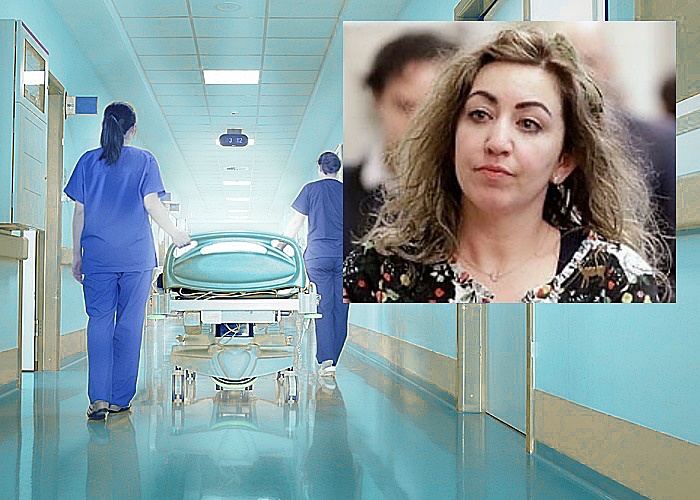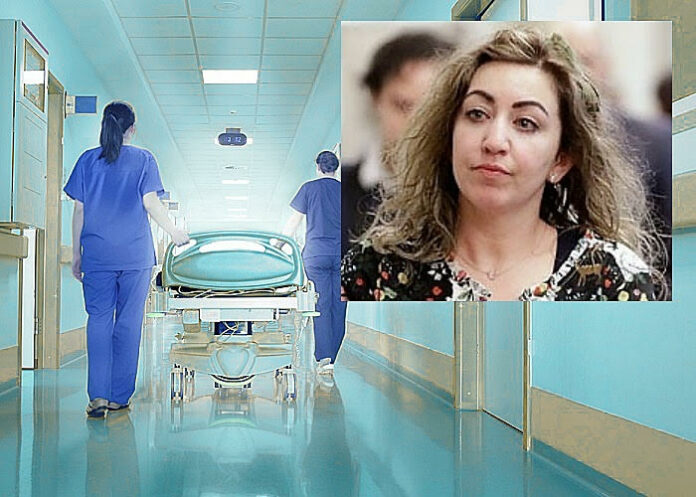The recent conviction of US ICU nurse RaDonda Vaught of criminally negligent homicide and gross neglect of an impaired adult continues to spark debate over the nature of medical error. There was consensus on a Medscape Emergency Medicine discussion that the conviction was “chilling”.
Numerous questions have been raised about hospital dispensing and other systems after Vaught was recently convicted of criminally negligent homicide and gross neglect of an impaired adult. Her case has led to an exodus of nurses from the profession, and an outcry that her medical error was just that, and that she has been made a scapegoat for system failures.
On 27 December 2017, Vaught, who worked at the Vanderbilt University Medical Center, had accidentally administered a paralytic medication, vecuronium, instead of a sedative, Versed, which was ordered to sedate a 75-year-old patient who had a brain bleed. After receiving the wrong medication, the woman suffered cardiac arrest and died.
Vaught, who faces a possible eight years behind bars, will be sentenced on 13 May.
In a recent panel discussion hosted by Dr Robert Glatter, medical advisor for Medscape Emergency Medicine, there was consensus that Vaught’s conviction was “chilling”, and that a “Swiss cheese of circumstances allowed this type of tragic error to occur”.
Discussing the case with Glatter were Dr Megan Ranney, professor of emergency medicine and the academic dean at Brown University School of Public Health, and Dr Jane Barnsteiner, emeritus professor at the University of Pennsylvania School of Nursing and an expert on patient safety, quality improvement, and system modelling.
Glatter raised a comment that Ranney had posted on Twitter, which he said had resonated with him: “A culture of safety is one in which the system that allowed the mistake to happen is changed, not one in which the individual is scapegoated. And a culture of safety correlates with better patient outcomes that we know.” He said the Vaught verdict was the complete opposite of this.
In his mind, he added, the system issue at the crux of the error was the electronic medication dispensing cabinet and system, from which Vaught had drawn the drug, and that there was a medication override.
The case hinges on Vaught’s use of the computerised device that dispenses a range of drugs. According to documents filed in the case, Vaught initially tried to withdraw Versed from a cabinet by typing “VE” into its search function without realising she should have been looking for its generic name, midazolam. When the cabinet did not produce Versed, Vaught triggered an “override” that unlocked a much larger swath of medications, then searched for “VE” again. This time, the cabinet offered vecuronium.
Glatter asked how this override was allowed to occur in the first place.
Vaught had apparently overlooked or bypassed at least five warnings or pop-ups saying she was withdrawing a paralysing medication, documents state. She also did not recognise that Versed is a liquid but vecuronium is a powder that must be mixed into liquid, documents state. Finally, just before injecting the vecuronium, Vaught stuck a syringe into the vial, which would have required her to “look directly” at a bottle cap that read “Warning: Paralysing Agent”, the DA’s documents had stated in court.
Vaught had acknowledged that she performed an override on the cabinet. But she and others said ere overrides are a normal operating procedure used daily at hospitals.
While testifying before the nursing board last year, Vaught had said at the time of the patient’s death, Vanderbilt was instructing nurses to use overrides to overcome cabinet delays and constant technical problems caused by an ongoing overhaul of the hospital’s electronic health records system.
According to Ranney, overrides happen every single day across the US, “dozens of times a day in any particular shift”.
She attributed Vaught’s mistake to a series of issues: “The larger system of the verbal orders, the time pressures the nurse is under, that the nurses are with a trainee, and that they’re being asked to operate outside their normal environment by going down to MRI.
“For years, many of us have worked on trying to change the system from one of punishing people …changing it from that punitive system to one where we can do root-cause analysis, allow people to disclose errors, and allow us to inquire about those series of Swiss cheese holes that allowed this mistake or any other to happen.”
She said by punishing people, “you lead them to hide their mistakes instead of allowing them to disclose them and allowing that important inquiry to happen”.
Blatter questioned whether there were more system checks that could be initiated to avoid a repeat of this tragic error, to which Barnsteiner replied: “First, you do not put in a major change, as Vaught’s hospital was doing with their system, as a big bank where you do the change through the entire organisation. You do it in one area at a time, where you get the whole system smoothed out and all the errors taken care of so that you’re not having a problem like they had through their entire organisation, which required overrides multiple times a day.
“One of the things recommended is that these systems require the first five letters of a medication to be entered into the system, so that when you have multiple medications where the first two letters are the same, like with vecuronium and Versed, the chances of pulling out the wrong medication are much smaller.
“There’s a question of whether vecuronium should have even been in this machine. You can have high-alert medications like this in baggies that have written on the front of the bag, ‘This is a high-alert medication. It requires two independent double checks’.
“Things like that will help alert the fatigued or distracted nurse or physician, and make things safer. There are many things that can be put into place.”
Glatter suggested that even if the nurse had a momentary lapse, “there should have been a hard stop asking whether you want this class (of drug)”.
Ranney replied that nurses work in an environment where medicines are constantly in short supply “and we’re constantly dealing with substitutions of one for another”.
“I imagine this nurse had been exposed to multiple medication substitution and so they were rushing; they thought, well, they just put one thing in instead of another and didn’t make that kind of cognitive connection.
“What we know so well from our studies of human factors, engineering, and the way systems work, is that when someone is cognitively overloaded and constantly having to think outside the box and make decisions, particularly when they’re exposed to a new system for ordering medicine, there’s only so much the brain can do at a time. This nurse was set up for this type of error.”
She added that this was “not to say she didn’t do something wrong”.
“That’s why we have a civil system. That’s why we have licensing and malpractice. But to call this a criminal error when she was working within a system that had all these other problems where they were constantly having to make do for system failures, it was almost inevitable that at some point something really horrible happened.”
Barnsteiner added that Vaught’s hospital did not have in place, at the time, the barcoding system in that particular patient area. “What nurses are used to doing is when they have to pull a medication, they’re using the barcoding system to coordinate with what’s in the electronic health record, with the medication, and with the person’s ID band.
“Those are all well-known safety checks that obviously the nurse was used to in the critical care unit but they weren’t available in this MRI area. That is a system failure. Those kinds of safety systems have to be available at any place in a health system where medications are being delivered.”
She said since the verdict, student nurses were increasingly talking about leaving the profession, which was worrying because there was already a shortage of nurses.
Vaughts conviction, agreed Glatter, could have a chilling effect on healthcare providers. “It makes people want to leave the field. It causes PTSD. The psychiatric downstream effects of such an error are just immense. I don’t know how the district attorney went for criminal charges here.” He added that there needed to be “a realignment of how errors are handled”.
Ranney pointed out that “no one goes into medicine intending to hurt someone”.
“The system fails us and fails the patient. This type of thing, where a system let them down, should require an inquiry of the system. Don't punish the individuals to the point of putting them in jail.”
Nurses had told her, she said, that they were worried about losing their licenses and their ability to practice because of the horrific circumstances under which they had been working – the understaffing, lack of access to standard medications, the long waiting times etc. “They're not able to take care of patients the way they’ve been taught to do,” she said.
“When you put something like this on top of it, where an unintentional error that was potentiated by a somewhat broken system or by a series of Swiss cheese holes that just happened to line up, what message does that send to nursing colleagues who have stayed on the front lines and know they have not been able to provide the standard of care they’re used to?”

Medscape article – Are All Medical Errors Now Crimes? The Nurse Vaught Verdict (Open access)
See more from MedicalBrief archives:
Criminal conviction for injection death causes consternation in US nursing profession
Nurse faces 8 years in jail following criminal prosecution over fatal injection
US nurse on trial for reckless homicide over administration of deadly drug

